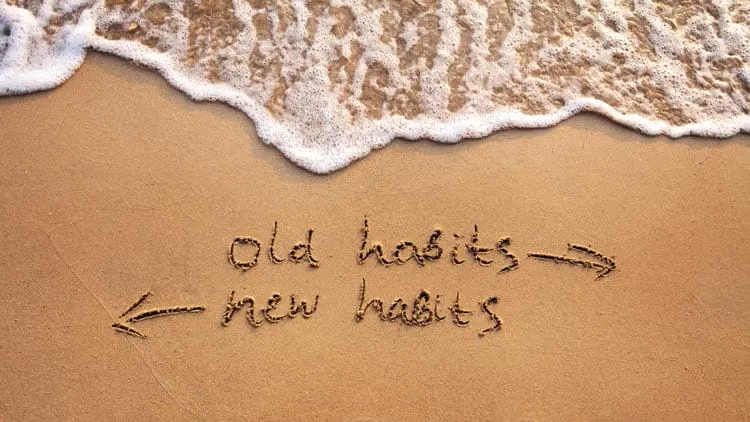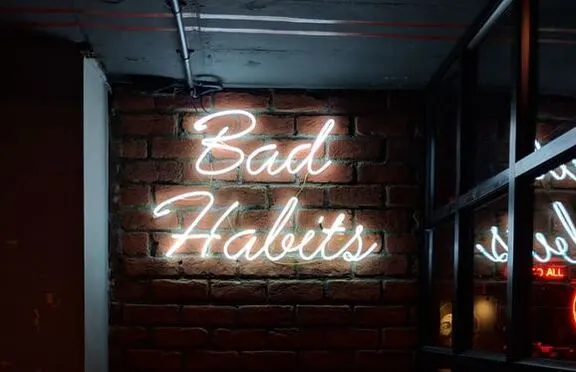Why Habits Control Your Life
Have you ever wondered why some habits stick while others are hard to break? Whether it’s biting your nails, scrolling endlessly on social media, or skipping workouts, bad habits can feel impossible to shake. The good news? Science has cracked the code on habit formation and breaking. In this article, we’ll explore how habits work, why they are so powerful, and what you can do to break bad habits for good.
The Science Behind Habit Formation
1. The Habit Loop: How Habits Are Built
According to behavioral psychology, every habit follows a simple three-step cycle called the Habit Loop, discovered by Charles Duhigg:
- Cue (Trigger): A signal that tells your brain to start a behavior. (Example: Feeling bored triggers social media use.)
- Routine (Behavior): The action you take. (Example: Scrolling on Instagram.)
- Reward (Outcome): The pleasure or relief you get. (Example: Entertainment or distraction.)
Repeating this loop strengthens neural pathways in your brain, making the habit automatic.

2. How Long Does It Take to Form a Habit?
Many believe habits take 21 days to form, but research from University College London suggests it takes an average of 66 days for a behavior to become automatic. Simpler habits (like drinking water) take less time, while complex habits (like working out daily) take longer.
Why Bad Habits Are So Hard to Break
1. Instant Gratification vs. Long-Term Benefits
Most bad habits provide immediate pleasure but cause long-term harm. For example:
- Junk food = Instant taste satisfaction but long-term health issues.
- Social media = Instant dopamine hit but decreased focus.
- Smoking = Stress relief but long-term health risks.
2. Brain’s Addiction to Dopamine
Dopamine is the “feel-good” chemical released in the brain when you do something pleasurable. Many bad habits are dopamine-driven, making them hard to resist.
3. Environment and Triggers
Your surroundings play a huge role in habit formation. If you’re surrounded by unhealthy snacks, you’ll likely eat them. If your phone is near you, you’ll check it frequently. Changing your environment is key to breaking bad habits.

7 Proven Strategies to Break Bad Habits
1. Identify Your Triggers
- Keep a habit journal to note when and why you engage in the bad habit.
- Identify patterns—do you always snack when watching TV?
2. Replace Bad Habits with Good Ones
- Instead of reaching for chips, eat a healthy snack.
- Replace social media scrolling with reading a book.
- If you smoke when stressed, try deep breathing exercises.
3. Make Bad Habits Hard to Do
- Delete addictive apps from your phone.
- Keep unhealthy snacks out of sight.
- Make procrastination inconvenient (use website blockers, put your phone in another room).
4. Use the “Two-Minute Rule”
- Developed by James Clear (author of Atomic Habits), this rule suggests making habits so easy that they take just two minutes.
- Example: If you want to work out, start with just putting on your gym shoes.
5. Reward Yourself for Progress
- Give yourself small rewards for breaking bad habits.
- Example: Every week you avoid junk food, treat yourself to a new book.

6. Build Accountability
- Tell a friend or join a community that supports your habit change.
- Use habit-tracking apps like Habitica or Streaks to stay on track.
7. Be Patient and Persistent
- Setbacks are normal! Don’t quit just because you mess up once.
- Remember, forming new habits takes time—consistency is key.
Conclusion: Take Control of Your Habits Today
Your habits shape your life more than you realize. Understanding how they work gives you the power to change them. Start small, stay consistent, and make smart changes to your environment. Soon, you’ll replace bad habits with healthier ones that serve you better. Which bad habit will you break first?
Do Follow USA Glory For More Updates.






